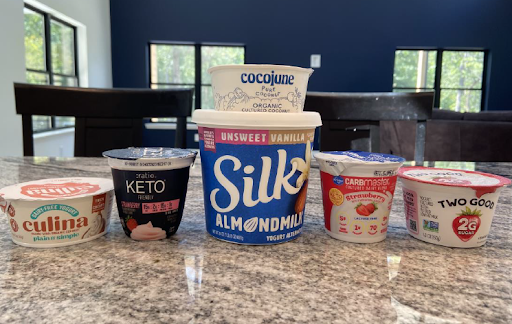Spooky Fun Without the Sugar: Surviving Halloween on Keto
/By: Maggie May (Parent Superstar)
Holidays—especially Halloween—can be particularly challenging for children on a strict ketogenic diet for epilepsy. Celebrations at school, with friends, and with family are often centered around food, and pumpkin spice and candy seem to be everywhere this time of year. For keto kiddos, this can bring mixed emotions as they’re surrounded by so many things they cannot have.
Fortunately, there are ways to make the season feel more inclusive. Many store-bought keto-friendly treats are available. Retailers like Target and Walmart also offer a growing selection of non-food Halloween goodies—such as slap bracelets, fun erasers, and bubbles—which can sell out quickly as the holiday approaches, so it’s wise to stock up early. And if you’d like to bring some festive fun into your kitchen, be sure to check out this blog for a collection of delicious Halloween recipes designed with keto families in mind.
School Celebrations
If your child has a party at school, be sure to let the teacher know in advance how you’d like to handle any treats that are passed out in school. Fortunately, it seems like schools are more allergy aware than they once were. My daughter’s school encourages non-food treats for parties and requires 1-week notice to bring in food items, but inevitably things slip through the cracks. My daughter’s preference is to be included anyway (knowing full well she can’t have the treats) and is happy to bring any candy home to her brother. If that isn’t your child’s preference, you can let the teacher know you’d like them to pull out any candy before your child gets it.
Trick or Treating
For trick-or-treating on Halloween, there are several different ways parents have handled it over the years. Be no matter which path you take, be sure to let your kids know there is a “no eating while trick-or-treating” rule.
Teal Pumpkin Project
Dealing with an allergy or strict metabolic diet is difficult, but the Teal Pumpkin Project is helping. Houses that have a teal pumpkin by the door are letting trick-or-treaters know in advance that they have non-edible treats. You can buy a teal pumpkin bucket (often available at places like Target and Walmart) to let people know your child has a food allergy and would prefer a non-edible treat, if they have one available.
Check out the Food Allery Research & Education website for more information or to add your house to the map or find houses nearby that have non-edible options – new for 2025!
Hand Out Treats to Neighbors in Advance
Another idea to get through the sugar-laden festivities is to go to neighbors in advance and deliver little toys or keto-friendly treats to give your child when you get to their house for trick-or-treating.
The Switch Witch
And one last idea that has worked well for us (including my non-keto kid) is our beloved Switch Witch. Each year leading up to Halloween, we read about the Switch Witch (see poem below) to be reminded of how it works. We trick-or-treat as usual and then after trick-or-treating, we come inside and the kids dump their haul into a bag and during the night, the Switch Witch trades it for acceptable treats or maybe even a toy. Even my non-keto kid has been happy to trade his candy. And keto kids or not, what parent doesn’t love less candy around the house?! Everybody wins!
A few of our favorite candies to put in food packs (all in moderation and run by your dietitian first, of course):
Lily’s chocolate bars and peanut butter cups
Quest peanut butter cups
Shameless Snacks (peach and watermelon gummies, available at Target)
Russel Stover Fruit Chews (Starbursts)
Zollipops
No matter which way you decide to celebrate Halloween, when it’s all said and done, I’m always reminded about how adaptable kids are. We surely don’t give them enough credit.
Click here for a downloadable PDF of The Switch Witch poem.
Disclaimer:
The products listed are examples that may fit a ketogenic diet. Nutrient content varies by brand, so read labels carefully and choose the lowest-carb option. Some may need added fat to meet ketogenic ratios, and many contain sweeteners or sugar alcohols that aren’t suitable for everyone. Always consult your healthcare team before adding new products to your diet.









































